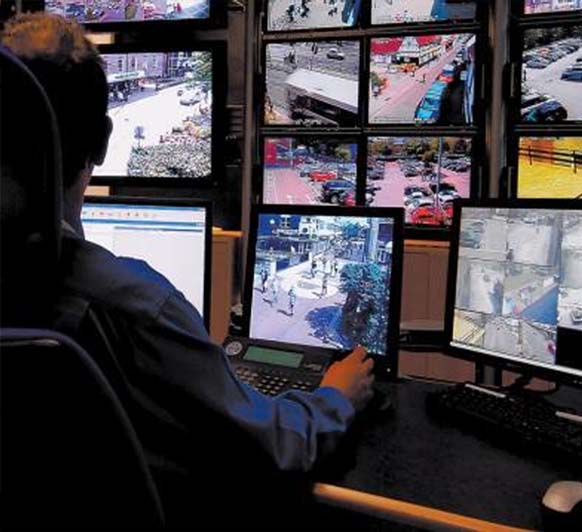
Login Into Your Account

Reset Password
Law enforcement Technology,Law enforcement Agency,Policing Technology,Smart Policing India,Homeland Security India,Border Security India,Border Management India,Cyber Crime news,Cyber Security news,Safety App,Public Safety App,Security App,Women Safety App,Police Initiative,Surveillance news,National Security news,isc event 2016,isc event 2017,scada event 2016,scada event 2017,Critical infrastructure security event 2016,Critical infrastructure security event 2017,iot summit 2016,iot summit 2017,Internet of things seminar 2016,Internet of things seminar 2017,iot seminar delhi 2016,iot seminar delhi 2017,iot conference delhi 2016,iot conference delhi 2017,top security event,security event,security event 2016,security event 2017,security conference 2016,security conference 2017,cso summit 2016,cso summit 2017,Corporate security event,Corporate security conference,security research india,homeland security research india,security think tank india
Law enforcement Technology,Law enforcement Agency,Policing Technology,Smart Policing India,Homeland Security India,Border Security India,Border Management India,Cyber Crime news,Cyber Security news,Safety App,Public Safety App,Security App,Women Safety App,Police Initiative,Surveillance news,National Security news,isc event 2016,isc event 2017,scada event 2016,scada event 2017,Critical infrastructure security event 2016,Critical infrastructure security event 2017,iot summit 2016,iot summit 2017,Internet of things seminar 2016,Internet of things seminar 2017,iot seminar delhi 2016,iot seminar delhi 2017,iot conference delhi 2016,iot conference delhi 2017,top security event,security event,security event 2016,security event 2017,security conference 2016,security conference 2017,cso summit 2016,cso summit 2017,Corporate security event,Corporate security conference,security research india,homeland security research india,security think tank india
Protection from Tsunami
 Author:
Author:
Dr Satheesh C Shenoi
Where there is a will, there will be a way. India has proven this axiom once more with aplomb.
Cut back to year December 26, 2004, the day world's one of the most devastating disaster struck killing 2,30,000 people in 14 countries along the rim of the Indian Ocean. Massive waves swept away buildings and people as if they were just pieces of paper. The damage was worst in Indonesia, Thailand, India and Sri Lanka. In India, an estimated 10,749 persons lost their life and 5,640 people were reported missing.
The disaster led to much soul searching as it soon became clear that much of the casualty could have been avoided if only there had been an early warning system for tsunamis in the Indian Ocean region. There were two tsunami warning centres at the global level. But, they catered to the pacific region only. Nobody expected a tsunami in the Indian Ocean.
The Tsunami was generated by an undersea earthquake about 250 km south west of the Indonesian city of Banda Aceh and it took anywhere between 15 minutes to seven hours for the fatal waves to reach the various coastlines.
The northern regions of the Indonesian island of Sumatra were hit very quickly. But, east coast of India was affected two hours later and west coast in four hours.
In other words, there was enough time to warn the people in India. Seismologists knew that a massive earthquake with a magnitude of 9.3 on the Richter scale had occurred. But, it was not known that it had generated a tsunami.
As a result, huge tsunami waves swept India, Sri Lanka, Indonesia, Thailand and other countries along the Indian Ocean with no warning what so ever. In India, the coastal communities in Tamil Nadu, Puducherry, Andhra Pradesh, Kerala, and Andaman and Nicobar Islands were devastated.
Since then, the situation has undergone a sea change. Today, a 24X7 early warning system is operational. It has a capability to issue tsunami bulletins in less than 10 minutes after any major earthquake in the Indian Ocean. This provides a response/lead time of about 10 to 20 minutes to regions nearer to the epicentre of the quake and a few hours in the case of regions further away.
The great Indian Ocean tsunami occurred on December 26, 2004 and within a year the Government approved the setting up of an early warning system after detailed brainstorming sessions with experts in the field both within and outside the country. Set up at a cost of Rs. 150 crore, the system became operational on October 15, 2007. Initially, it had a capability to issue a warning within 20 minutes. It has since then been fine tuned and first warning is now available within 10 minutes.
The Indian Tsunami Early Warning System [ITEWS] comprises of a real time network of seismic stations, tsunami buoys and tide gauges. These are linked to a state-of-art tsunami centre – Indian Tsunami Early Warning Centre [ITEWC], where the data are analysed using high power computational systems. Advisories are issued automatically to the various stakeholders beginning from the Ministry of Home Affairs and the National Disaster Management Authority to State and district level disaster management centres for necessary follow up action.
The ITEWC is located at the Union Ministry of Earth Science's Indian National Centre for Ocean Information Services [INCOIS] in Hyderabad.
The real time seismic monitoring network comprises of 17 broadband seismic field stations transmitting real time data through V-SAT communication to the central receiving stations located at INCOIS and the National Centre for Seismology at New Delhi simultaneously for processing and interpretation. In addition, data from around 300 global seismic stations is received at INCOIS in near real time. These data sets form the basis for determining the preliminary parameters of earthquake epicentre, focal depth and magnitude. The earthquakes are auto-located within 5-10 minutes of occurrence.
The brain of the early warning system is a state of the art decision support system at ITEWC, which has a database of all possible earthquake scenarios for the Indian Ocean.
The moment a tsunamigenic earthquake -- an undersea quake with a magnitude of 6.5 and above occurs, the decision support system gets activated and rapidly goes through the database and fishes out the matching advisory.
SOURCE: Echo of India
Newsletter
Sign Up for Monthly Newsletter
Recent Tweets
CONTACT US
Crux Center for Security
Research and Events (CCSRE)
3rd Floor, Tower-B, Unitech Cyber Park
Sector 39, Gurugram,122022
0124- 4207903, 05, 06
Copyright © 2016 Crux Center For Security Research And Events (CCSRE) | All Right Reserved
